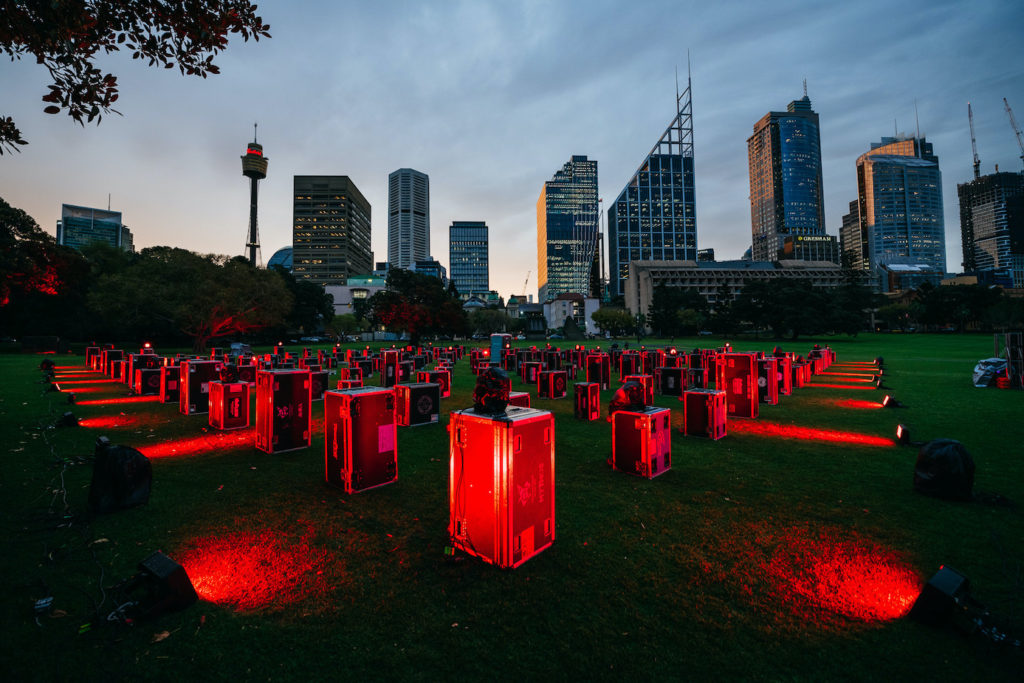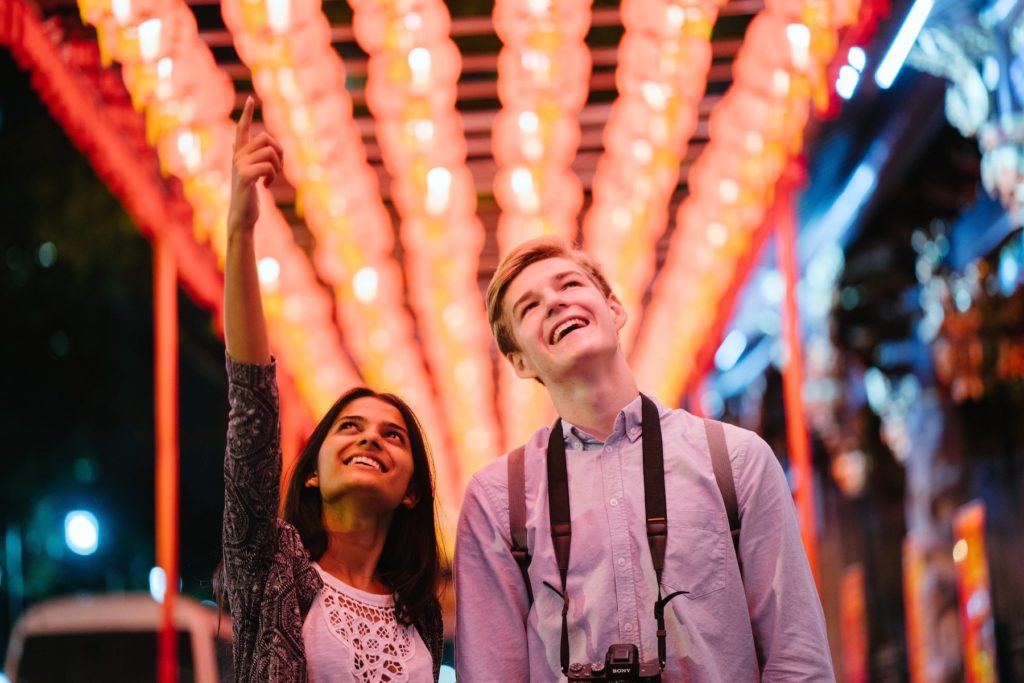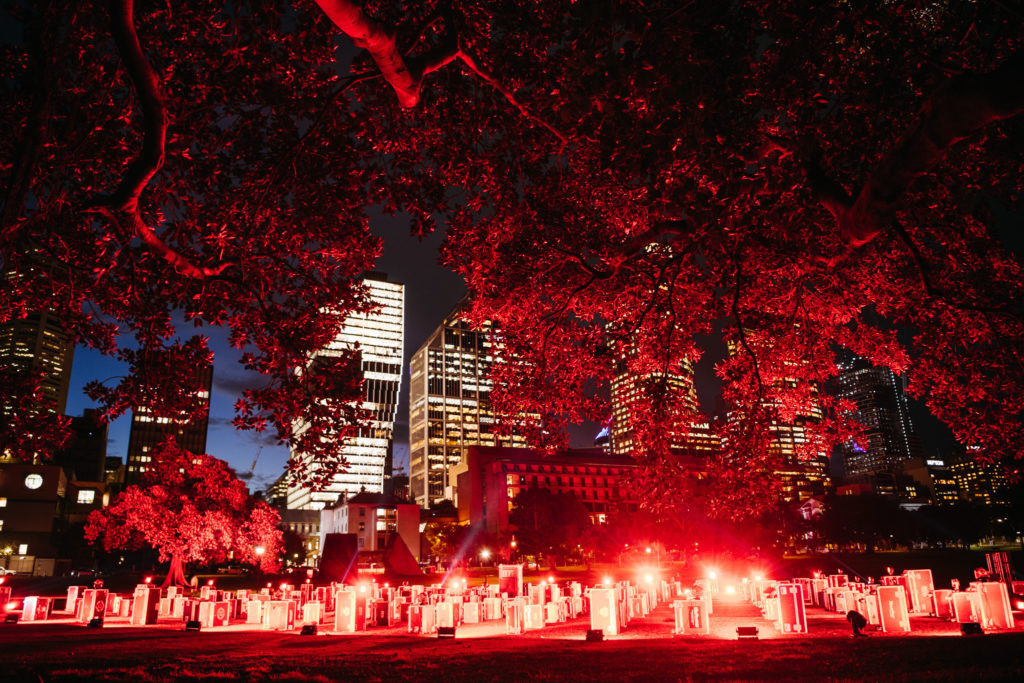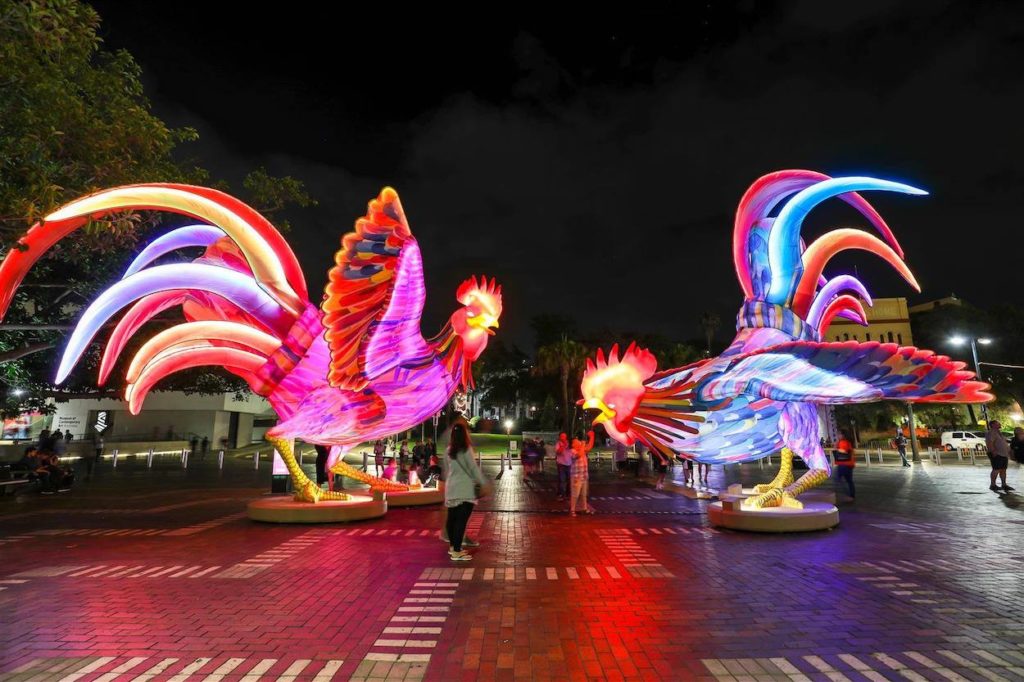The first battle for Sydney nightlife has been won
From lockouts through to lockdowns, Sydney’s nightlife industry has been through the wringer these past six years. Jordan Rahlia charts how nightlife advocacy has played a crucial role over this time in transforming state government attitudes and actions towards nightlife, highlighting why – pandemic notwithstanding – 2020 has held clear signs of success.

It may not feel like it yet but – somewhere amidst the shock and shutdowns and general turmoil of 2020 – Sydney is proving itself to be a success story in the power of sustained nightlife advocacy.
It would be insulting to the thousands of nightlife industry workers and business owners facing unemployment or closure to consider this a time for celebration. Obviously, all is not well. Due to the global pandemic, the music and hospitality industries are barely keeping their noses above water, adjacent industries like taxis or late night retail are suffering from lack of foot traffic, the clubbing and festival sectors are effectively frozen and financially free-falling and eight months into the pandemic almost none of the Federal Government’s Arts sector support package has been spent.
This grim context makes it all the more important for Sydney-siders to appreciate that a decisive battle has been won on the wearied front of Sydney nightlife, where the industry has been in retreat since 2014 when the state government introduced the infamous Lockout Laws (which included heavy restrictions on alcohol consumption and movement between venues) in an attempt to curb violence after dark.
It was six years coming, but change is here. In January of this year the Lockout Laws were quietly rolled back. Nine months and one global pandemic later, The New South Wales State Government’s 24 Hour Economy Strategy for Sydney has arrived, ushering in an era of possibility for Sydney’s nightlife sector.
Created in consultation with several of Sydney’s local councils and bodies like the Night Time Industries Association, the Restaurant and Catering Industry Association, the Live Music Office, Keep Sydney Open and Theatre Network NSW, The Strategy outlines plans for a holistic night offering, including greater diversity of experiences available after dark, increased cultural activations, and relaxation of approval processes for outdoor licenses, live music and late-opening. It promotes improved transport options, increased infrastructure and lighting after dark, and more protections for existing music venues against noise complaints. Its plans are not limited to the city centre either, with a “neon grid” proposed which will highlight, protect and link various nightlife hubs around greater Sydney.
“After years of limiting the nightlife conversation to incidents of alcohol-fuelled violence, in 2020 the NSW State Government has drastically and publicly changed tack, recognising the nighttime economy as something worth promoting and protecting.”
After years of limiting the nightlife conversation to incidents of alcohol-fuelled violence, in 2020 the NSW State Government has drastically and publicly changed tack, recognising the nighttime economy as something worth promoting and protecting.
It will make all the difference. Though local councils like City of Sydney have been allies to nightlife for decades, as Libby Harris, City of Sydney’s Nighttime Economy Manager, puts it – when it comes to meaningful action the State Government “holds a lot of the key levers that we need pulled to enable a better operating environment for nightlife.”
The machinery is in motion; propelled into fast-forward on its new nightlife approach by the economic pressures of the pandemic, in the last few weeks the government has already committed 15 million in funding to enable City of Sydney’s plans to transform the city centre into a “24 hour alfresco city” this summer. Meanwhile, the state government-supported Great Southern Nights initiative will see 1000 Covid-safe concerts across the state in the month of November, attempting to re-invigorate a live music industry that has been silenced since March.
“There are a lot of people in government now that are on board,” explains Libby Harris. “They understand what needs to happen and are very supportive. I know there’s a lot of fatigue in the industry, but there really is light at the end of the tunnel.”
So how did we get here?

Changing the narrative
For years Sydney’s nightlife advocates have laboured to broaden the conversation beyond issues of drug and alcohol abuse. Cultural activist group (and later political party) Keep Sydney Open came in swinging in the early years of lockout laws, with large-scale protest events fuelled by an emotional argument on the intrinsic cultural value of nightlife. KSO’s campaign quickly matured to include extensive economic research, and draw on international examples to show alternatives to increasing safety after dark that didn’t require draconian restrictions and heavy policing. “It wasn’t just a matter of a couple of street rallies,” recalls KSO’s chief spokesperson Tyson Koh. “We had people with mathematics PHDs look into government reports and do economic modelling, we read nighttime management plans from global cities and folded that into our shopping list of policies and requests.”
Simultaneously, Libby Harris and the team at City of Sydney worked relentlessly within government, also attempting to reframe nightlife discussions, “towards what we want to see more of: more culture, more creativity and more diversity after dark”.
It took a while to be heard. In 2017, NSW’s incoming Premier Gladys Berejiklian was asked for the first time in a radio interview to describe her position on the Lockout Laws. Her response in praise of the laws argued that, “Mums and Dads in the suburbs are worried about what their young kids are doing when they’re having a good time… [Lockout Laws] send the message that it’s not OK to have a culture where it’s cool to get drunk and hit people,” – both insulting and infantilising the overwhelmingly non-violent people of all age groups who work and participate in nightlife culture.
“A lot of the language that the government now uses can all be found in the very first submission that Keep Sydney Open made into the Lockouts inquiry.
Three years on, the Berejiklian government’s 24hr Strategy uses rhetoric and promotes policies that nightlife advocates have been preaching since the start. As Tyson Koh says, “A lot of the language that the government now uses can all be found in the very first submission that Keep Sydney Open made into the Lockouts inquiry. From phrases like ‘night time economy’ and ‘vibrancy’, to equating people going out with employment and livelihoods in connective industries such as taxi, retail and restaurant businesses.”
The vindication The Strategy provides is explicit and complete; it even dedicates a chapter to “changing the narrative” of Sydney nightlife. “Prior to Covid-19,” it reads, “Sydney’s predominant narrative was still focused on licence laws and policing night-time activity, particularly with regards to alcohol-related activity… The conversation must be widened to take on a more forward-thinking and holistic view of the city’s nightlife”. Well, yeah.

Unity and self-organising
So why is the government listening now? At least part of the answer is that the industry is beginning to speak with a more united voice.
In 2016, when the (then) Night Mayor of Amsterdam Mirik Milan visited Sydney for the Electronic Music Conference (EMC), he arrived to an industry in despair and disarray, struggling to cope with the hostile conditions the government had created for nightlife operators and punters alike. His most important message: get united, and get organised. “There were so many different voices, and all with their own interests,” Libby Harris recalls of that time. “It diluted their strength as far as being able to advocate for change.”
The following year Milan returned, partnering with EMC founder Jane Slingo to form Global Cities After Dark conference (GCAD), which sought to strengthen global knowledge and networks in the field of nightlife advocacy, and narrow the gap between culture makers and policy makers. GCAD brought some of Sydney nightlife’s key stakeholders and cultural drivers together in a room with members of the state government, to converse and collaborate for the first time. Then, in 2018, City of Sydney convened the Creative Sector and Nightlife Advisory Panel, dedicated to enhancing dialogue between the industry and government on nightlife issues. The industry was uniting – and the government began to listen.
The pandemic of 2020 has galvanised that unity. Emily Collins, managing director of MusicNSW and member of the City of Sydney Nightlife and Creative Sector Advisory Panel, has felt the change. “As devastating as the impacts of Covid have been on the music industry as a whole, we’ve seen several different industries and avenues of people who were competitors working together to convey to government the extent of the impact of the pandemic on their businesses, and express the need for support.”
“It’s part of the maturation of any industry: the capacity to look beyond competition and to prioritise collaboration.”
Particularly important in that process has been the swift and ongoing collection of data through surveys. When gatherings of over 500 people were banned in March, the I Lost My Gig survey was launched within 18 hours. 24 hours later the survey had recorded 25 million dollars in lost income due to cancelled events, and by May, that figure was 340 million. “That survey had a really big impact on the creative industry’s ability to articulate its needs,” says Collins, who has spent most of her year orchestrating subsequent surveys and seeking case studies in order to keep the government informed. “Being able to put figures on these things is just so powerful – it helps organisations like mine to tell the story of what’s going on in the sector.”
Collins cites the recently launched Save our Stages campaign as another strong example of the industry marshalling itself. “The campaign is supported by more than 60 venues, who are essentially all competitors who have joined forces to plead to the government for support. It’s been fascinating and rewarding to see industries coming together and working on a shared vision for what the state can be. It’s part of the maturation of any industry: the capacity to look beyond competition and to prioritise collaboration.”

Tenacity, time and timing
The persistence of Sydney’s nightlife advocates would mean little without an inescapable and essential ingredient: time. In 2018, Sydney Morning Herald reported 176 venues had closed since the Lockout Laws were introduced. The following year a Deloitte Access Economics Report estimated the laws had cost Sydney around $16 billion in lost revenue. By the end of 2019 no one in Sydney could plausibly deny that Sydney’s nighttime economy was embarrassingly underperforming. “The effects over the years were palpable,” Tyson Koh remarks. “And the people who were complaining about Sydney’s lack of vibrancy crossed political and generational lines.”
The timing feels cruel, but at least the pandemic has arrived when the government is ready to listen. The unpredictability of 2020 has also given industry organisations unprecedented access to government ears. “There has been much more discussion and dialogue [with the government] due to the fast changing nature of things,” explains Emily Collins. “We are getting a regular audience when previously we wouldn’t have had such luck.”
It’s also becoming apparent that the nightlife industry’s recovery is intrinsic to the city’s wider economic recovery, as the government looks for ways to safely increase inner city foot traffic and spending. Indeed many strategies to bolster the industry in the long term can also be leveraged to aid it in the context of COVID-19 restrictions, as outlined in multiple chapters of the Global Nighttime Recovery Plan (GNRP) – an internationally collaborative guide hosted on nighttime.org, to aid cities in safely reopening and strengthening their nighttime offering during and post-COVID.
“It’s becoming apparent that the nightlife industry’s recovery is intrinsic to the city’s wider economic recovery, as the government looks for ways to safely increase inner city foot traffic and spending.”
Reducing barriers to venues gaining pavement licenses and late-opening licenses, for example, is crucial to maintaining physical distancing, using both spatial and temporal advantages of the city to increase capacity and profit margins for hospitality industries, whilst encouraging people back into the city centre to support adjacent businesses too. At City of Sydney, things are now moving at “100 miles an hour” towards these goals, says Libby Harris in preparation for Sydney’s first pandemic summer. Indeed the GNRP’s third chapter features Sydney as “an encouraging example” and “now at the forefront of global 24-hour city visioning, planning, data and impact evaluation”.
Meanwhile, the government is in the process of hiring for a full time position tasked with liaising between state government, local government and private industry stakeholders to ensure its 24 Hour Strategy doesn’t simply collect dust on a shelf. At long last, Sydney is effectively getting its own night mayor, though the successful applicant won’t have the evocative title of “Night Mayor” or “Night Czar” conferred on similar positions in cities like Amsterdam, New York or London. Instead, Sydney will soon salute a “Coordinator General of the 24 Hour Economy Strategy”. Catchy.

Healing Sydney’s “identity crisis”
The future of Sydney nightlife now rests in our well sanitised hands. We owe it to the business owners frantically pivoting their way towards new revenue streams, new licenses and new entertainment ideas to get off the couch and experience Sydney’s nightlife in this strange new context. We owe it to the business owners elbow deep in grant and support applications, who cannot open at all right now, to prove there is and will be an appetite for their offering once restrictions are relaxed. And we owe it to ourselves to enjoy some good news and good times when they come to us.
When asked about their hopes for next year, City of Sydney’s Libby Harris, Keep Sydney Open’s Tyson Koh and Music NSW’s Emily Collins all shared a similar vision.
“If all we talk about is booze and violence, that’s all we’re ever going to get,” says Harris. “I hope people will look at our vision for a more cultural and creative city at night and say, ‘yeah – we want that!’”
“No one needs more convincing that Sydney’s vibrancy can bounce back than Sydneysiders themselves,”
“This is a city that too often talks itself down as somewhere that isn’t about culture and nightlife,” says Collins. “But what we have seen recently is that Sydney does actually show up for the Arts – there is a strong community sentiment about supporting these things. Sydney needs to get past its identity crisis, and Covid is an opportunity for a mindset shift. We live in an incredible city and I’d love its narrative to be more about the great things it has to offer than about the things that it doesn’t.”
“No one needs more convincing that Sydney’s vibrancy can bounce back than Sydneysiders themselves,” Koh echoes. “But whether it does or not is completely up to us. Up to us to go out, attend events, go to restaurants. It’s up to us to start businesses if we have a sound plan or an idea to rejuvenate much-loved precincts. And the government has a responsibility to enact the strategy that they devised; there’s a mutual obligation to make sure that the nighttime economy doesn’t fall by the wayside.”
Many challenges for the industry are still to come but, thanks to the sustained and increasingly well organised efforts of nightlife advocates across the industry, the community and local councils, the New South Wales State Government has, finally, come to the party on nightlife. So will you?
Update – In the weeks following this article’s release, the Liquor Amendment (24 Hour Economy) Bill passed through New South Wales State Parliament’s lower house, overhauling more than 600 pieces of antiquated legislation relating to liquor licensing, development consents and live music restrictions, in what is being described as a “monumental change” in favour of nightlife venues and performance industries.
Our Features section publishes exclusive original content created by nighttime.org associates, going deeper into global COVID-19 response strategies and scene perspectives by drawing on our international network of night mayors, nightlife advocates and industry stakeholders for comment.
If you would like to contribute, contact hello@vibe-lab.org with your pitch.
